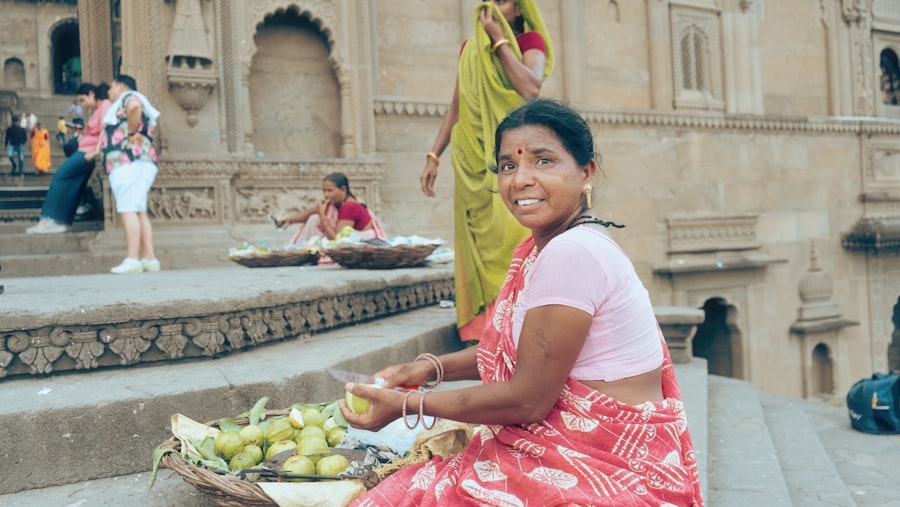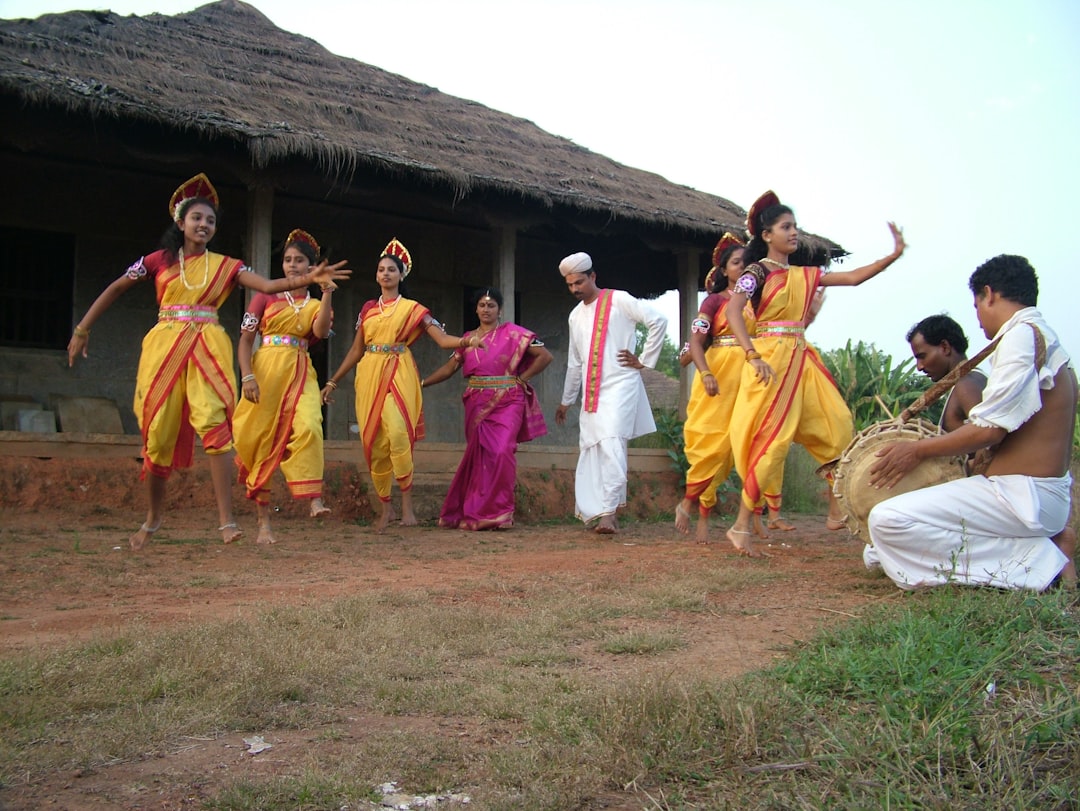Northeast India, a region characterized by its rich tapestry of cultures, languages, and ethnicities, is home to a diverse population of women who play pivotal roles in their communities. The region comprises eight states—Arunachal Pradesh, Assam, Manipur, Meghalaya, Mizoram, Nagaland, Tripura, and Sikkim—each with its unique traditions and social structures. Women in Northeast India are often seen as the backbone of their families and communities, contributing significantly to both the economy and the preservation of cultural heritage.
Their roles are multifaceted, encompassing responsibilities in agriculture, trade, and governance, while also being custodians of traditional knowledge and practices. The status of women in this region is shaped by a complex interplay of historical, cultural, and socio-economic factors. While some communities have matrilineal systems that afford women greater rights and autonomy, others are influenced by patriarchal norms that limit their opportunities.
Understanding the nuances of women’s roles in Northeast India requires an exploration of these historical and cultural contexts, as well as an acknowledgment of the contemporary challenges they face.
Key Takeaways
- Women in Northeast India have played significant roles in shaping the region’s society and culture.
- Historical and cultural factors have influenced the traditional roles and status of women in Northeast India.
- Women have made valuable contributions to various aspects of Northeast Indian society, including education, politics, and entrepreneurship.
- Despite facing challenges, women in Northeast India have opportunities for empowerment and advancement.
- Various initiatives and programs are being implemented to empower and support women in Northeast India, with the potential for a brighter future for women in the region.
Historical and Cultural Context of Women’s Roles in Northeast India
The historical context of women’s roles in Northeast India is deeply intertwined with the region’s diverse cultural practices. In many matrilineal societies, such as those found among the Khasi and Jaintia tribes in Meghalaya, women inherit property and are often the primary decision-makers within their households. This system contrasts sharply with the patriarchal structures prevalent in other parts of India, where women typically have limited rights to inheritance and property ownership.
The matrilineal tradition empowers women not only economically but also socially, allowing them to maintain a significant degree of autonomy. However, the historical narrative is not uniform across the region. In states like Nagaland and Manipur, women’s roles have been shaped by both traditional practices and the impact of colonialism and post-colonial governance.
The introduction of Western education and legal systems often disrupted existing social structures, leading to a re-evaluation of women’s roles. Despite these challenges, women have historically been active participants in social movements, particularly during periods of political unrest. For instance, the Naga women’s movement has been instrumental in advocating for peace and reconciliation in a region marked by conflict.
Women’s Contribution to Northeast Indian Society

Women in Northeast India contribute significantly to various sectors, including agriculture, handicrafts, and local governance. In rural areas, they are often responsible for agricultural production, managing both subsistence farming and cash crops. Their knowledge of indigenous farming techniques and sustainable practices is crucial for food security and environmental conservation.
For example, women in Assam engage in tea cultivation and processing, which is a vital part of the state’s economy. Their involvement not only supports their families but also contributes to the broader economic landscape of the region. In addition to agriculture, women are key players in the handicraft industry, producing textiles, pottery, and bamboo products that reflect the rich cultural heritage of their communities.
The weaving traditions of the Manipuri and Assamese women are particularly noteworthy; their intricate designs and techniques have gained recognition both nationally and internationally. By participating in these industries, women not only preserve traditional crafts but also create economic opportunities for themselves and their families. Furthermore, women’s involvement in local governance through self-help groups and community organizations has empowered them to advocate for their rights and influence decision-making processes at various levels.
Challenges and Opportunities for Women in Northeast India
Despite their significant contributions, women in Northeast India face numerous challenges that hinder their progress. One of the most pressing issues is gender-based violence, which remains prevalent across many communities. Cultural norms that perpetuate discrimination against women often lead to domestic violence, trafficking, and other forms of abuse.
Additionally, limited access to education and healthcare services further exacerbates these challenges. In many rural areas, girls are still denied educational opportunities due to socio-economic constraints or traditional beliefs that prioritize boys’ education. However, there are also emerging opportunities for women in the region.
The increasing focus on women’s empowerment by both governmental and non-governmental organizations has led to initiatives aimed at improving access to education and healthcare. Programs that promote skill development and entrepreneurship are gaining traction, enabling women to become economically independent.
These efforts not only enhance women’s economic status but also challenge traditional gender roles within their communities.
Women’s Empowerment Initiatives in Northeast India
Numerous initiatives have been launched to empower women in Northeast India, focusing on education, health, economic independence, and political participation. The National Rural Livelihood Mission (NRLM) is one such program that aims to reduce poverty by promoting self-employment and organization of rural poor into self-help groups (SHGs). These SHGs have become instrumental in providing women with access to credit and training opportunities while fostering a sense of community among members.
In addition to government initiatives, various non-governmental organizations (NGOs) play a crucial role in advocating for women’s rights and providing support services. Organizations like the North East Network (NEN) focus on issues such as gender-based violence and women’s health while promoting sustainable livelihoods through skill development programs. These initiatives not only empower women economically but also raise awareness about their rights within their communities.
Moreover, women’s participation in local governance has been encouraged through policies that reserve seats for women in village councils and local bodies. This political representation allows women to voice their concerns and influence decisions that affect their lives directly. The success stories of women leaders emerging from these initiatives serve as powerful examples of how empowerment can lead to transformative change within communities.
Future Prospects for Women in Northeast India

The future prospects for women in Northeast India appear promising as awareness about gender equality continues to grow. With increasing access to education and economic opportunities, young women are beginning to challenge traditional norms that have historically limited their roles. Educational institutions are increasingly recognizing the importance of gender-sensitive curricula that promote equality and empower girls to pursue careers in various fields.
Furthermore, the rise of digital technology presents new avenues for women’s empowerment. Access to information through mobile phones and the internet enables women to connect with resources, networks, and markets beyond their immediate communities. E-commerce platforms are allowing women artisans to sell their products globally, thereby expanding their reach and income potential.
As societal attitudes shift towards greater acceptance of women’s rights and contributions, there is hope for a more equitable future. Continued advocacy for policy changes that support women’s rights will be essential in addressing systemic barriers that persist. By fostering an environment where women can thrive economically, socially, and politically, Northeast India can harness the full potential of its female population for sustainable development.
In conclusion, while challenges remain significant for women in Northeast India, ongoing efforts toward empowerment through education, economic independence, and political participation are paving the way for a brighter future. The resilience and strength demonstrated by women across this diverse region serve as a testament to their vital role in shaping society and driving progress forward.
In exploring the historical and cultural narratives of women in Northeast India, it is essential to consider the broader context of social ethics and the interplay of moral rights, duties, and virtues. This perspective can provide a deeper understanding of the unique roles and challenges faced by women in this region. An insightful related article that delves into these themes is titled “Exploring the Interplay of Moral Rights, Duties, and Virtue in Social Ethics.” This article offers a comprehensive examination of how ethical frameworks can influence and shape societal norms and individual behaviors, which is particularly relevant when analyzing the historical lens of women in Northeast India. For further reading, you can access the article here.
FAQs
What is the historical significance of women in Northeast India?
Northeast India has a rich history of matriarchal societies and matrilineal inheritance, where women have traditionally held significant roles in the social, economic, and political spheres.
What are some unique cultural practices related to women in Northeast India?
In some communities in Northeast India, women have the right to inherit property and pass on their family names to their children. Additionally, women often play a central role in decision-making processes within their communities.
How have women in Northeast India contributed to the region’s development and progress?
Women in Northeast India have been actively involved in various fields such as education, healthcare, and entrepreneurship, contributing to the overall development and progress of the region.
What are some challenges faced by women in Northeast India?
Despite the historical significance of women in Northeast India, they still face challenges such as gender-based violence, limited access to education and healthcare, and underrepresentation in political and leadership positions.
What are some initiatives aimed at empowering women in Northeast India?
Several organizations and government initiatives in Northeast India are focused on empowering women through education, skill development, and entrepreneurship programs. These initiatives aim to enhance the socio-economic status of women in the region.






















+ There are no comments
Add yours